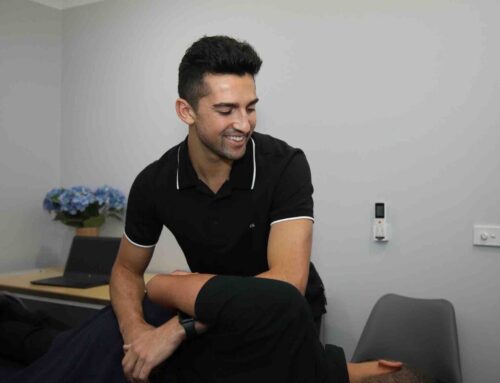Imagine trying to open a jar or lifting your baby only to experience sharp pain along your thumb and wrist. If this scenario sounds familiar, you might be dealing with De Quervain’s tenosynovitis. As an osteopath, there are many clients struggling with this condition, and here are some insights and tips for managing it effectively.

Image: https://www.melbournehandtherapy.com.au/conditions-treated/dequervains-tenosynovitis/
What is De Quervain’s Tenosynovitis?
De Quervain’s tenosynovitis occurs when the tendons around the base of the thumb become irritated or constricted. This inflammation can lead to pain and swelling, making simple tasks a challenge. The condition is often linked to repetitive hand or wrist movements, which is why new parents, gardeners, hairdressers, factory workers and those in occupations requiring frequent hand and wrist use are particularly susceptible.
The most common symptom of De Quervain’s tenosynovitis is pain near the base of the thumb. This pain can extend into the lower arm and might worsen with activities involving grasping or pinching. Swelling and a catching or snapping sensation in the thumb are also indicators. If these symptoms sound familiar, it’s crucial to address them early to prevent further discomfort and potential complications.
How Osteopathy May Help

Treatment of the wrist
As an osteopath, we focus on a holistic approach to treatment, aiming to reduce pain and restore function without solely relying on medications. Here’s how we can address De Quervain’s tenosynovitis together:
- Assessment and Diagnosis:
We’ll start with a thorough assessment, discussing your symptoms and daily activities that might contribute to the condition. This helps in understanding the root cause and tailoring a treatment plan specifically for you.
- Manual Therapy:
Gentle manipulation and stretching of the affected area can help reduce inflammation and improve mobility. Techniques such as soft tissue massage and joint mobilization are often effective in relieving pain and promoting healing. At Pakenham Osteopathy we also have a state-of-the-art high-powered Laser therapy machine which can decrease pain and inflammation – and its completely pain-free! To find out more about how Laser therapy works click here
- Exercise and Rehabilitation:
Strengthening and stretching exercises for the wrist and thumb are essential. Choosing specific exercises to enhance flexibility and strength, aiding in long-term recovery and preventing recurrence.
- Lifestyle Modifications:
Identify and modify activities that exacerbate symptoms. Ergonomic adjustments, proper wrist support, and frequent breaks during repetitive tasks can make a significant difference.
- Education and Self-care:
Understanding your condition and knowing how to manage it at home is empowering. Practical advice and self-management techniques, such as icing the affected area and/or using supportive braces if necessary.
Your Path to Recovery
Dealing with De Quervain’s tenosynovitis can be frustrating, but with the right approach, relief is within reach. By addressing the underlying causes and focusing on holistic treatment methods, we can work together to alleviate your pain and improve your quality of life. Remember, you don’t have to navigate this condition alone. Reach out, and let’s embark on a path to healing and recovery together – book online here.




